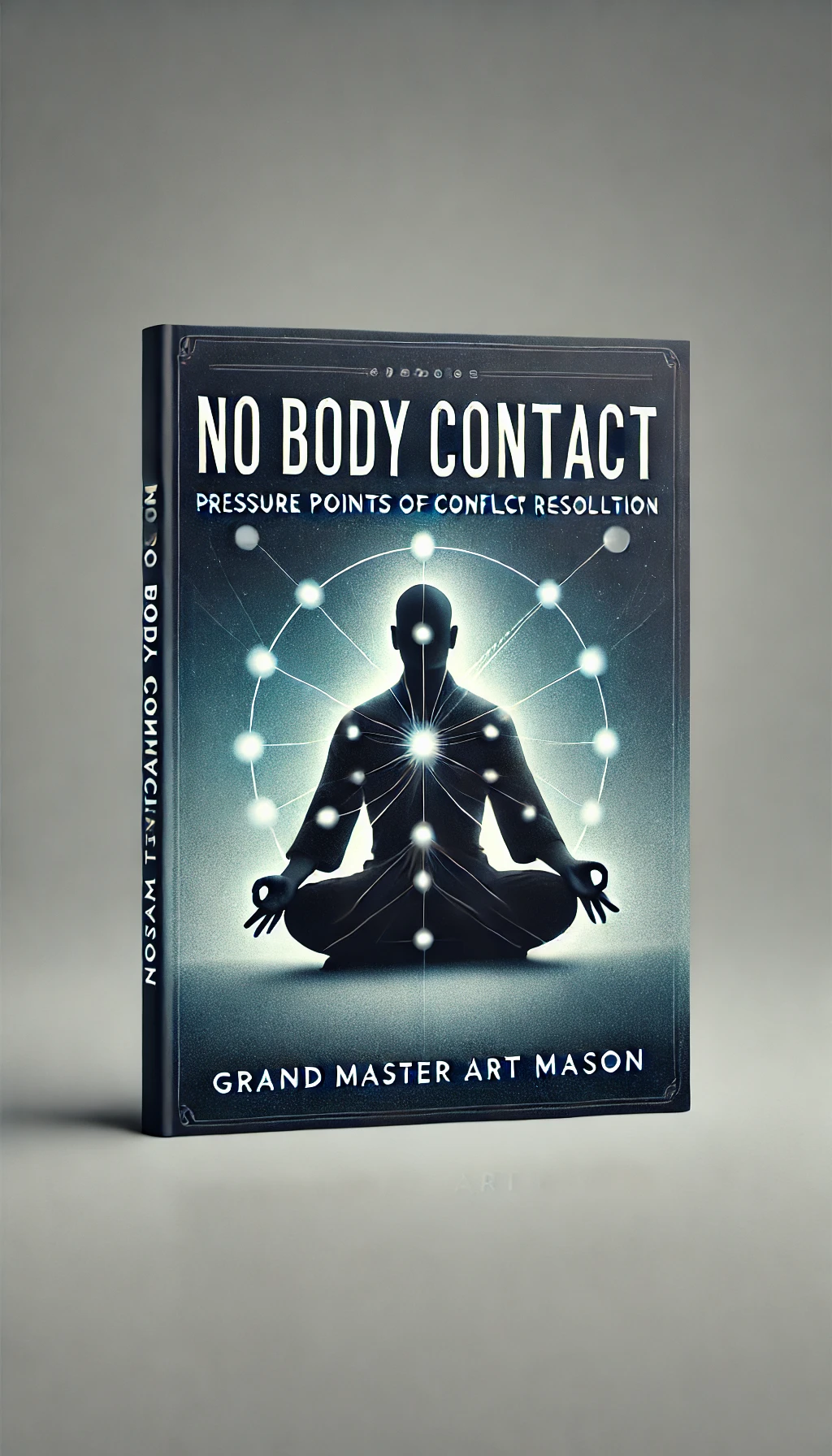
“No Body Contact: Pressure Points of Conflict Resolution,” is written by you, Grand Master Art Mason, and published by Kosho Ryu Enterprises S.L.R Romania in 2024. This comprehensive eBook focuses on the importance of conflict resolution, with an emphasis on both physical and psychological strategies.
Below is a summary of its contents:
1. **Foreword**:
— The book opens with a personal anecdote involving a conflict with a neighbor, which serves as a catalyst for writing the eBook. It underscores the importance of seeking understanding and peaceful resolution in conflicts, rather than escalating them unnecessarily.
2. **Chapter One: Understanding Conflict**:
— This chapter defines conflict as a disagreement or clash between parties due to differing needs, values, beliefs, or interests. It details various types of conflicts (interpersonal, Intragroup, intergroup, international) and their causes, such as miscommunication and power dynamics. The chapter also discusses the differences between disagreement and conflict, highlighting how conflicts can escalate if not managed effectively.
3. **Chapter Two: Immigration Conflicts in Romania**:
— A personal story is shared about dealing with immigration issues in Romania during the global pandemic of 2020. This chapter emphasizes the importance of cooperation and clear communication in resolving bureaucratic conflicts and avoiding unnecessary escalation.
4. **Chapter Three: Improve Your Language and Communication**:
— The chapter stresses the importance of language skills in conflict resolution, arguing that clear and confident communication can prevent misunderstandings. It also introduces the concept of the “Platinum Rule,” which advises treating others as they wish to be treated, rather than just how you would want to be treated.
5. **Chapter Four: Triple Warmer**:
— This chapter delves into Traditional Chinese Medicine (TCM) concepts, particularly the Triple Warmer Meridian, which is linked to emotional states such as anger, happiness, and grief. The discussion focuses on how understanding and manipulating these emotional states through pressure points can influence conflict resolution.
6. **Chapter Five: Understanding and Power Words**:
— Here, the text explores the use of power words in communication to create empathy, encourage cooperation, and instill confidence during conflicts. It also touches on the principle of “Seek First to Understand, Then to Be Understood,” from Stephen Covey's “The 7 Habits of Highly Effective People.”
7. **Chapter Six: Violence Underscores Everything**:
— The chapter reflects on how violence is an underlying force in society, often lurking beneath the surface of interactions and governance. It discusses historical and contemporary examples of how the threat of violence can maintain order but also argues for the importance of martial arts training as a means of preparing for, but ideally avoiding, violent encounters.
8. **Chapter Seven: Pressure Points**:
— The final chapter provides an overview of various pressure points used in Traditional Chinese Medicine and martial arts, explaining how they can be employed in conflict resolution. The chapter also touches on the ethical considerations of using such techniques, emphasizing that they should be a last resort.
The document is rich with personal anecdotes, practical advice, and philosophical reflections on conflict resolution, aiming to guide readers towards peaceful and effective handling of disputes in various aspects of life.